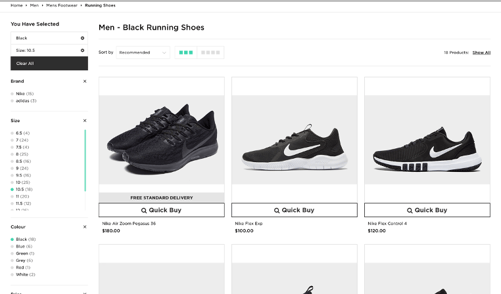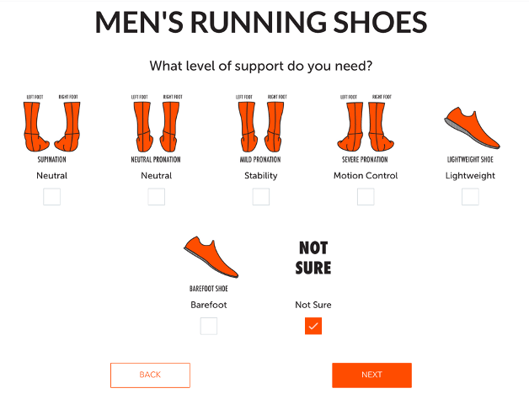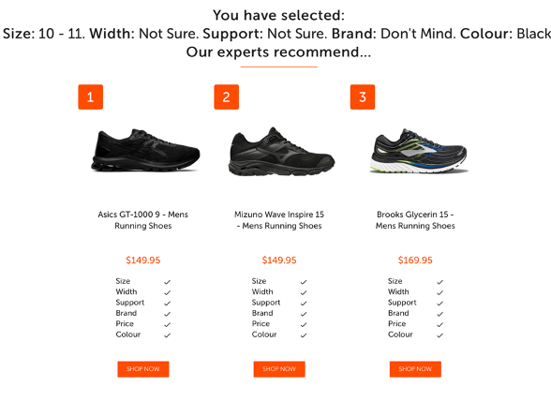The gap between online shopping and traditional shopping experiences is being closed every year. The E-commerce and traditional retail industry are both trying to improve their service to stay competitive. Traditional retail focuses on implementing premium experiences, experiences that are otherwise difficult to replicate online. Concurrently E-commerce is striving to provide in-store retail experiences.
Product discovery difference
Traditional retail and online retail both serve the same purpose. However, businesses find a drastically higher conversion rate in-store compared to online.
Did you know that in-store typically convert around 30% - 40% while online converts around 2%. Ever wondered why this happens? There are reasons, it’s not “just because” or “that’s the way it’s always been”. There is always a reason why consumers act differently in different situations.
Virtually no one is looking under the hood to understand why consumers buy more frequently in-store when compared to online. Low conversions online is a common problem and businesses need to do something about it.
It’s not sufficient and sustainable to keep spending marketing budget on Google, Facebook and Instagram, at some point they will become so experience that the ROI won’t be there. If I told you that your traditional marketing channels all of a sudden stop showing return, how would you manage?
Could you survive of loyal and returning customers? Further to that, how many returning customers still come through paid services?
The current product discovery process
The product discovery is one of the most critical elements of an ecommerce site, however it doesn’t seem to get the recognition it deserves. How many times have you heard “product discovery” in a webinar in comparing to social media, or EDM, etc. Product discovery is literally the process the customer MUST go through to find a suitable product, it’s not optional and every single purchase has gone through the process. However, it rarely gets attention and has barely been improved over the last decade. What gives?
Let’s take an example of a store that sells running shoes online, now imagine you are looking for a running shoe that needs to meet the below criteria:
Gender: Men
Size: 10.5
Brand: Any
Color: Black
Application: Running on asphalt
Support: Motion support

Think about the process to find your right shoe, firstly, you’ll need to find the men’s section and running category. Then you need to use product filters (assuming they have them) to narrow down product choices. However it is unlikely they have filters for things like support or application. So you're stuck in product discovery. What do you do? Well you filter what you can, color, brand, price, etc and get a list of 134 shoes. How in the world is a person meant to navigate 134 shoes? The result, you leave and most likely walk into a store and talk with a sales assistant that can answer your questions and recommend the right running shoe for you.
Have you heard of choice paralysis? If your in eCommerce and haven’t, then I think it’s worthwhile you read a little about consumer behavior When a customer is provided too much product too choose from, they often get confused about their own decision making process and enter into a state of paralysis. Even if they manage to push through this and buy, their purchases are considerably less satisfying as opportunity cost of other products dawns on them. So what does this mean? You need to remove choice paralysis from your customer journey.
The problem
One of the major differences between online and in-store shopping experience is the sales assistant. From our research we have found almost 50% of users will leave a site if they cannot quickly and easily find their right products. This is a major contributor to the big gap in conversion rates between online stores and retail stores.
Information such as best-selling, recently viewed, newest addition, etc, are just a way to optimize customers' journey process, but those improvements do not simulate a sales assistant experience.
Retail store sales assistants are employed to assist walk-in customers in getting the products they desire. In this case, sales assistants would ask a few funneling questions about their needs and preferences. Such as activity, foot size, sole structure, shoe color, support needs, etc. From these questions, the sales assistant would recommend the right product that fits your need according to their product knowledge. The sales assistant proves to be an important variable in generating conversion.
How to provide the same customer experience online?
It’s simple, improve your product discovery process and bring the experience of the sales assistant online. Education users they need help choosing and make it clear why a specific product would suit them.
One method to achieve this is through product discovery and guided conversion platforms like Preezie. With platforms like these, online stores can simulate a sales assistant experience in an online store. Users will engage with interactive workflows that will allow users to input their needs and preferences. Using the data from the workflow, product recommendations will be generated from our recommendation algorithm.
Customers wouldn’t need to scroll through numerous product choices to realize that the product they choose might lead to future dissatisfaction. Instead, the software will recommend products that focus on products relevant to their needs.
Using the same product specs, we tried to use Preezie’s functioning workflow on our client’s website, Sportitude.
Example of Preezie guided conversion software running on Sportitude:
Product Page


We have had success in closing the conversion rate gap between online and retail stores. For example with Sportitude, users that use the Preezie system are 3 times more likely to buy then those who do not.
If you are interested to know how Preezie solves conversion problems with our past customers, click the link here: https://www.preezie.com/case-studies

